Wow, was May really the last time I put up a post? I was at the local toolswap trying not to come home with much. Usually, I’m quite good about not buying planes at the swaps but this one stood out.
It’s an all-iron body, very heavy (about that of a Stanley No. 8-perhaps a little more). It’s 16 in. long by 2 in. wide. The iron is 1-5/8 or 1-3/4: I forgot to measure it. The blade was sharpened to a fairly normal profile with just a gentle camber to it. The screw-cap is a very substantial piece of iron. At least, I assume it is based on some chipping on the backside near the treads. The most interesting aspect of the plane is the rear handle (it has no fore). It’s a low D-shape and is offset past one side of the plane body. There’s a screw through the sole holding the back part of the handle on, the front part has protruding threads but looks like the screw head was filed off. The mouth is somewhat tight to the blade and is expertly formed.
Now, what is it and who made it? The iron says: “LeGroote &C – Cast Steel” and little else. Groote seems to be a Dutch(?) word for ‘great’ or ‘grand’ but the ‘Le’ would suggest French origins. The name could be French/Belgian/Dutch in origin but the ‘Cast Steel’ implies it was intended for and probably made in, England or the US. Overall, this plane felt British to me, though I can’t put my finger on why and could be completely wrong about it’s origins. Looking it over, the plane seems to be built around the iron, but it would be challenging to say the plane and the iron share the same origin.
I’ll speculate this is supposed to be a shooting/chuting board plane. The presence of only one handle offset as such implies it was to be used while the other hand of the user is occupied with another task like holding the workpiece against a bench hook. Also, the offset in the handle makes it very unlikely the plane was intended for normal bench work as you’d apply force in the wrong place. It is positioned in such a way that would allow the fingers of the user to easily clear the work surface the plane was sliding on. To further support this theory the right cheek (looking from the rear of the plane) is somewhat thicker than the left. If the plane were intended for use as a chuting plane this cheek would face down and offer several advantages, such as wear resistance and stability.
Any one know about this plane? I feel that it looks familiar but cannot find anything close to it to rectify that thought.
- Mystery plane front
- Mystery plane side
- LeGroote iron 1
- LeGroote iron 2
- D handle
- Handle offset
- Mouth
- Handle attachment point
- D handle – top view
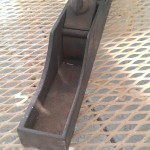
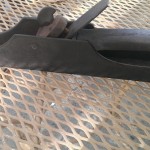
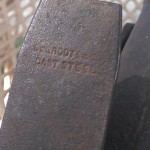
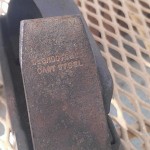
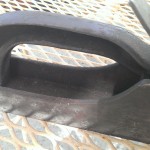
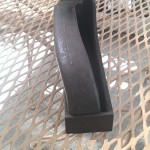
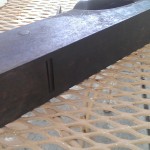
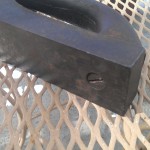
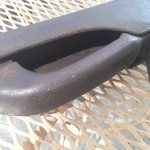

No Comments